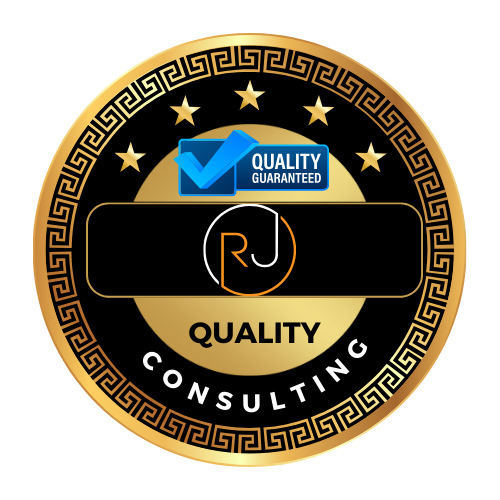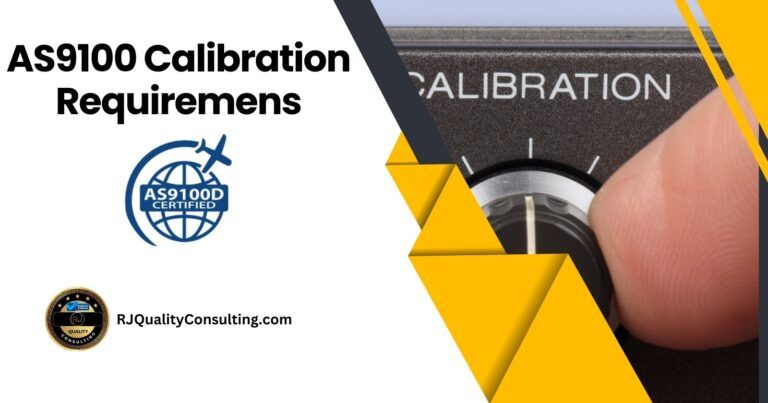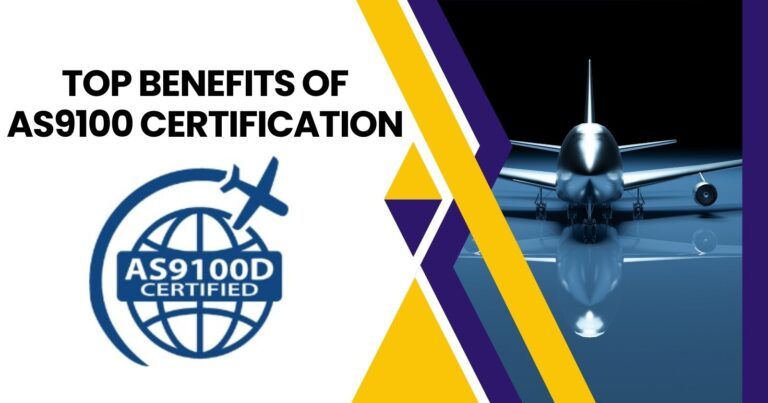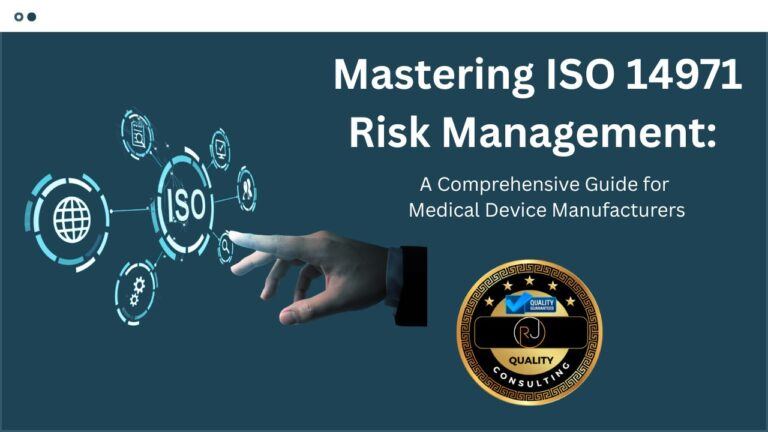AS9100 Risk Based Thinking: Essential Strategies for Aerospace Quality Management
AS9100 Risk Based Thinking is a key part of quality management in the aerospace industry. It helps companies spot and handle problems before they happen. This approach is built into the AS9100 Rev D standard, which guides how aerospace firms run their quality systems.

Risk based thinking helps aerospace companies make better choices, avoid mistakes, and meet strict safety rules. It’s not just about avoiding bad things. It also helps firms find new ways to improve and grow. By thinking about risks early, companies can save money and time.
Risk based thinking is woven into every part of AS9100 Rev D and Risk based thinking in ISO 9001 is essential to that standard as well. From planning to daily work, it helps teams focus on what’s most important. This way of working keeps aerospace products safe and reliable. It also helps companies stay ahead in a tough market.
📘 ISO/IEC 17025 Quality Manual Template
Accelerate your lab’s accreditation process with our comprehensive Quality Manual Template, designed to align with ISO/IEC 17025:2017 standards.
- Fully editable and customizable to fit your laboratory’s needs.
- Includes all necessary procedures, forms, and policies.
- Structured to facilitate easy implementation and compliance.
- Developed by experts with extensive ISO/IEC 17025 experience.
Key Takeaways
- Risk based thinking is a core part of AS9100 Rev D for aerospace quality management
- It helps companies prevent problems and find new ways to improve
- Risk based thinking applies to all parts of an aerospace company’s work
Understanding AS9100 Risk Based Thinking
AS9100 risk-based thinking is a key part of aerospace quality management. It helps companies spot and handle risks that could affect their products or services.
Risk-Based Thinking in AS9100
Risk-based thinking in AS9100 means looking at possible problems before they happen. Companies need to think about what could go wrong in their processes. This helps them make better choices and avoid issues.
AS9100 asks businesses to find risks in all parts of their work. They must also plan how to deal with these risks. This approach helps keep products safe and high-quality.
Risk management in AS9100 includes:
- Finding potential problems
- Figuring out how bad they could be
- Making plans to prevent or fix issues
- Checking if the plans work
Evolution from AS9100 Rev C to AS9100 Rev D
AS9100 Rev D brought big changes to how aerospace companies handle risk. The old version, Rev C, didn’t focus as much on risk. Rev D made risk-based thinking a main part of quality management.
In Rev D, companies must:
- Think about risks in all their processes
- Plan ways to deal with risks
- Keep track of how well they manage risks
This new focus helps businesses:
- Stop problems before they start
- Make their quality systems work better
- Meet rules and keep customers happy
Rev D also asks companies to look for good chances, not just risks. This helps them grow and get better at what they do.
Leadership and Commitment

Leaders play a key role in managing risks within aerospace organizations. They set the tone for a risk-aware culture and make critical decisions to address potential issues.
Role of Leadership in Risk Management
Top management must show commitment to risk-based thinking in AS9100. Leaders identify risks and opportunities that could affect product quality and safety. They integrate risk management into business processes and strategic planning.
Leaders allocate resources for risk assessment and mitigation. This includes training staff on risk management techniques. They also review risk reports and take action on high-priority items.
Effective communication is vital. Leaders keep employees informed about risks and mitigation strategies. They encourage staff to report potential issues without fear.
Leaders set risk tolerance levels for the organization. They decide which risks to accept, avoid, or transfer. Regular reviews help ensure the risk management process stays effective.
Planning for Risk Management

Risk management planning is a key part of AS9100. It helps companies spot and deal with risks before they cause problems. Good planning makes sure risks are handled the right way.
Actions to Address Risks and Opportunities
Companies need to plan how they will address risks and chances. This is part of clause 6.1 in AS9100. The planning process should look at both good and bad things that could happen.
A good plan will:
- List possible risks and chances
- Rate how big each risk is
- Choose ways to deal with risks
- Set who is in charge of each action
- Pick times to check if actions are working
Companies should keep records of their plans. This helps show they are following AS9100 rules.
Risk Assessment and Risk Matrix
Risk assessment helps figure out which risks need the most attention. A risk matrix is a tool that makes this easier. It looks at how likely a risk is to happen and how bad it would be if it did.
A basic risk matrix might look like this:
| Severity | Low | Medium | High |
|---|---|---|---|
| Likely | 3 | 6 | 9 |
| Possible | 2 | 4 | 6 |
| Unlikely | 1 | 2 | 3 |
Higher numbers mean the risk needs more focus. Companies can use this to decide which risks to deal with first.
Operation of Quality Management System

AS9100 Rev D puts a strong focus on risk-based thinking in quality management systems. This approach aims to improve quality, cost, and delivery performance by addressing risks in operational processes.
Operational Risk Management
Clause 8.1.1 of AS9100 Rev D requires companies to manage risks in their operational processes. This involves identifying potential issues that could affect product quality or service delivery. Companies need to assess these risks and put controls in place to reduce them.
Some key areas to consider are:
- Supply chain risks
- Manufacturing process risks
- Equipment and facility risks
- Human factors
By tackling these issues, firms can prevent problems before they happen. This leads to smoother operations and better outcomes for customers.
Integrating Risk-Based Thinking into Operations
Risk-based thinking should be part of daily operations, not a separate task. This means:
- Training staff to spot and report risks
- Adding risk checks to regular processes
- Using data to find trends and predict issues
- Updating risk plans as the business changes
Tools like risk matrices can help rank risks by impact and likelihood. This allows teams to focus on the most critical areas first.
Regular reviews keep risk management current. As new risks emerge or old ones change, the QMS can adapt to keep operations running smoothly.
Risk Management and Opportunities

AS9100 Rev D emphasizes both managing risks and seizing opportunities. This approach helps aerospace companies prevent problems and improve their operations.
Identifying and Capitalizing on Opportunities
Companies need to actively look for chances to get better. They can do this by:
- Analyzing market trends
- Listening to customer feedback
- Reviewing internal processes
When opportunities are found, they should be evaluated. The best ones can then be acted on. This might mean:
- Developing new products
- Improving existing services
- Entering new markets
By focusing on opportunities, companies can grow and stay competitive. It’s not just about avoiding problems – it’s about moving forward.
Preventive Action and Improvements
Taking steps to stop issues before they happen is key. Companies should:
- Use data to spot potential problems
- Train staff to notice and report risks
- Put safeguards in place
Continuous improvement is also vital. This means:
- Regularly reviewing processes
- Setting goals for better performance
- Making changes based on lessons learned
By being proactive, companies can avoid many issues. They can also make their operations more efficient and effective over time.
Evaluating Risk-Based Thinking Performance
Measuring the success of risk-based thinking in aerospace quality management systems requires ongoing assessment and analysis. Key areas to examine include process outcomes and customer feedback.
Monitoring and Measurement
Organizations track risk-based thinking through various methods. They use key performance indicators (KPIs) to assess how well risks are managed. Common KPIs include:
- Number of identified risks
- Percentage of mitigated risks
- Cost savings from risk prevention
- On-time delivery rates
- Product defect rates
Regular audits help check if risk controls are working. Teams review risk registers to see if listed risks still apply. They also look for new risks that may have come up.
Customer surveys provide insight into how risk management affects satisfaction. Low complaint rates often signal good risk control. High scores on quality and reliability questions also point to effective risk-based thinking.
Analysis and Evaluation
Data from monitoring efforts needs careful review. Quality teams compare current performance to past results and industry benchmarks. This shows if risk-based thinking is improving over time.
Statistical tools help spot trends in risk data. Charts and graphs make it easy to see changes in risk levels. Cost-benefit analysis measures the value of risk management efforts.
Reviews should check if risk treatments are cost-effective. Sometimes, the cost to prevent a risk may be higher than the potential loss. In these cases, teams may need to adjust their approach.
Regular management reviews are key. Leaders use performance data to make informed choices about risk strategies. They may decide to change processes or allocate more resources to high-risk areas.
Aligning AS9100 with Industry Requirements
AS9100 sets quality standards for aerospace and defense. It helps companies meet strict rules and manage risks. The standard applies to both aerospace and space sectors.
AS9100 in the Aerospace Industry
AS9100 is crucial for aerospace companies. It ensures high-quality parts and systems for aircraft. The standard covers design, production, and maintenance.
Key areas include:
- Risk management
- Supply chain control
- Product safety
- Counterfeit part prevention
Airlines and regulators expect AS9100 compliance. It helps reduce errors and delays in aircraft production. Companies must track risks at every stage.
AS9100 also improves:
- On-time delivery
- Customer satisfaction
- Process efficiency
Aerospace firms use AS9100 to stay competitive. It helps them meet strict aviation safety rules.
AS9100 in the Space Industry
The space industry also relies on AS9100. It helps manage risks in satellite and rocket production. Space companies face unique challenges like extreme environments.
AS9100 for space focuses on:
- Radiation resistance
- Vacuum compatibility
- Thermal management
- Long-term reliability
Space agencies often require AS9100 certification. In fact, AS9100 certification requirements ensures components can survive launch and orbit. The standard helps prevent costly failures in space missions.
AS9100 adapts to new space tech like:
- Reusable rockets
- Small satellites
- Space tourism vehicles
It guides companies in managing risks for these innovations. AS9100 helps the space industry maintain high quality as it grows and changes.
Continual Improvement and Compliance
AS9100D emphasizes ongoing enhancement and adherence to standards. Organizations can use tools like SWOT analysis and focus on regulatory compliance to strengthen their quality management systems.
Integrating SWOT Analysis
SWOT analysis helps companies identify strengths, weaknesses, opportunities, and threats. This tool supports continual improvement in AS9100D systems. Companies can use SWOT to spot areas for growth and potential risks.
Strengths might include skilled staff or advanced tech. Weaknesses could be outdated processes. New markets present opportunities. Threats may come from competitors or changing regulations.
Regular SWOT reviews keep improvement efforts on track. They also help firms stay ready for audits and changes in the industry.
Ensuring Compliance with Regulatory Requirements
Staying compliant with AS9100D rules is key for aerospace firms. Companies must keep up with changing laws and industry standards. This means reviewing and updating processes often.
Firms should create clear steps for tracking new rules. They need to train staff on updates and check that everyone follows the rules.
Good record-keeping is vital. Companies must save proof of their work and choices. This helps show auditors they meet AS9100D standards.
Regular internal audits can catch issues before outside checks. They also help firms find ways to get better at following the rules.
Preparing for AS9100 Audits
Getting ready for AS9100 audits requires careful planning and documentation. Companies need to focus on addressing audit findings to improve their quality management system.
Audit Planning and Documentation
The planning process is key for AS9100D audits. Companies should review their QMS and gather all needed documents. This includes quality manuals, process maps, and risk assessments.
Having organized records makes audits smoother. Firms can create checklists to track audit prep tasks. Training staff on AS9100 requirements helps them answer auditor questions.
Companies should conduct internal audits before the real one. This finds weak spots to fix. Mock audits also build staff confidence for the actual audit.
Addressing Audit Findings
Audit findings show areas for improvement in the QMS. Companies must take them seriously and act quickly. They should make a plan to fix each issue found.
Fixing problems may mean updating processes or training staff. The goal is to prevent the same issues from happening again. Companies can use risk-based thinking to spot potential future problems.
Tracking progress on fixes is important. Firms should keep records of all changes made. This proves to auditors that the company takes compliance seriously.
Regular reviews help ensure fixes stick long-term. This ongoing effort strengthens the whole QMS over time.
Frequently Asked Questions
AS9100 risk-based thinking involves identifying and addressing potential issues in aerospace quality management systems. It helps organizations improve processes and meet customer requirements.
How can an organization implement risk-based thinking in line with AS9100 requirements?
Organizations can implement risk-based thinking by identifying potential risks in their processes. They should assess the likelihood and impact of these risks.
Creating action plans to address high-priority risks is important. Regular reviews and updates of risk assessments help maintain effectiveness.
What are the key components of a risk management process under AS9100?
Key components include risk identification, analysis, and evaluation. Organizations should also plan risk responses and monitor their effectiveness.
Documenting risk management activities and involving relevant stakeholders are crucial steps. Regular training on risk management practices helps maintain awareness.
In what ways does AS9100:2016 differ from the previous versions in terms of risk-based thinking?
AS9100:2016 places more emphasis on risk-based thinking throughout the entire quality management system. It requires organizations to consider risks and opportunities in all processes.
The new version integrates risk management into planning, operation, and performance evaluation activities. This approach helps organizations be more proactive in addressing potential issues.
What are some examples of risk-based thinking in the context of an aerospace quality management system?
Examples include assessing supplier reliability to prevent parts shortages. Evaluating potential equipment failures and planning preventive maintenance is another application.
Considering human factors in assembly processes to reduce errors is important. Analyzing customer feedback to identify potential product improvements also demonstrates risk-based thinking.
How does risk-based thinking under AS9100 contribute to continuous improvement?
Risk-based thinking helps organizations identify areas for improvement proactively. By addressing potential issues before they occur, companies can enhance product quality and customer satisfaction.
This approach encourages regular evaluation of processes and outcomes. It leads to more efficient use of resources and better decision-making.
How can an organization document and demonstrate its risk management activities as per AS9100 guidelines?
Organizations can use risk registers to document identified risks and mitigation plans. Meeting minutes that show risk discussions and decisions provide evidence of risk management activities.
Audit reports and corrective action records can demonstrate how risks are addressed. Training records on risk management topics also show commitment to this approach.
🕒 Book Your Free 45-Minute Consultation
Have questions about ISO/IEC 17025 or ISO 9001 implementation or accreditation? Schedule a free 45-minute consultation with me to discuss your Company or laboratory’s needs and how we can achieve compliance together.
Schedule Your Consultation





